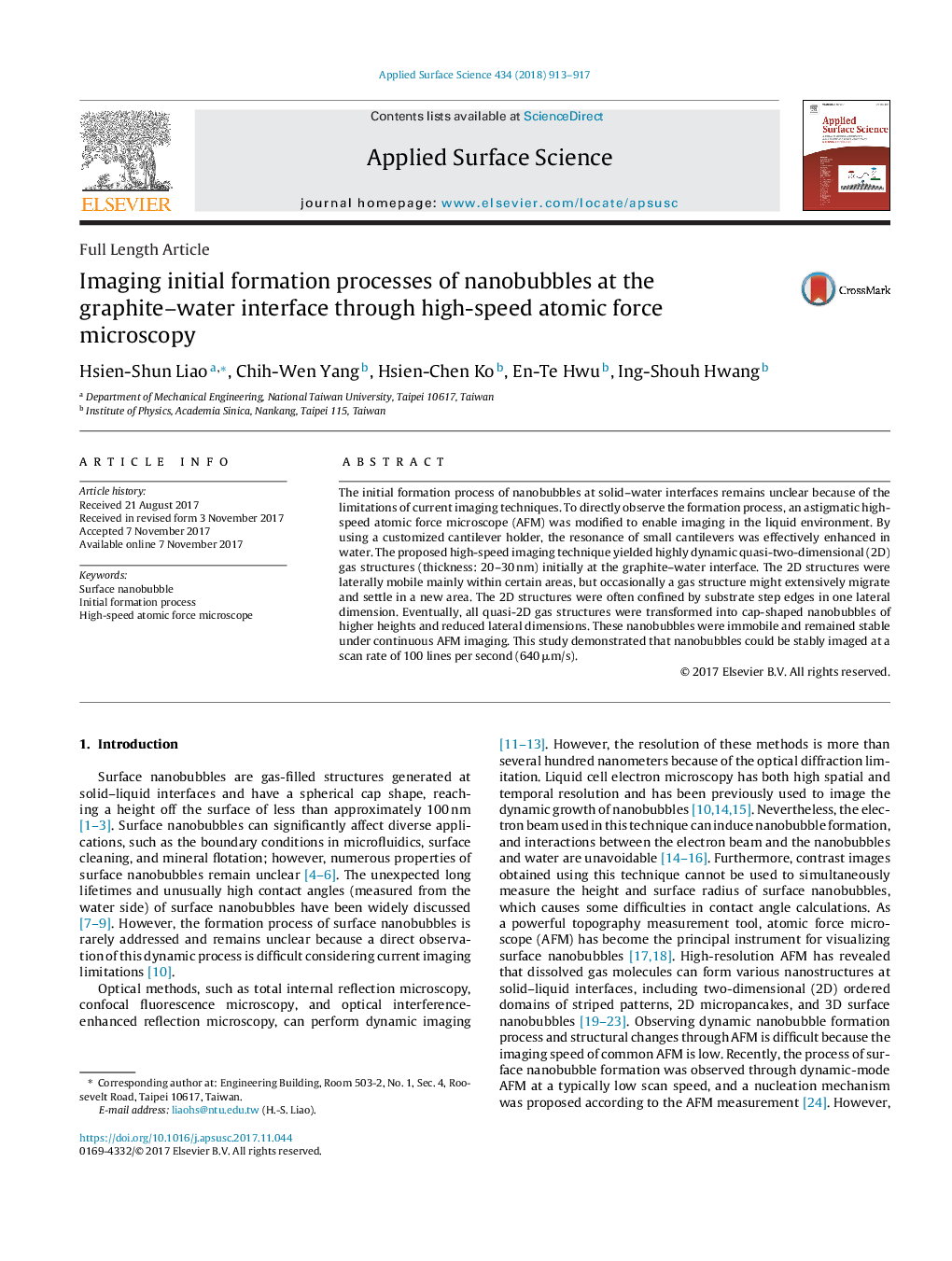| Article ID | Journal | Published Year | Pages | File Type |
|---|---|---|---|---|
| 7836566 | Applied Surface Science | 2018 | 5 Pages |
Abstract
The initial formation process of nanobubbles at solid-water interfaces remains unclear because of the limitations of current imaging techniques. To directly observe the formation process, an astigmatic high-speed atomic force microscope (AFM) was modified to enable imaging in the liquid environment. By using a customized cantilever holder, the resonance of small cantilevers was effectively enhanced in water. The proposed high-speed imaging technique yielded highly dynamic quasi-two-dimensional (2D) gas structures (thickness: 20-30ânm) initially at the graphite-water interface. The 2D structures were laterally mobile mainly within certain areas, but occasionally a gas structure might extensively migrate and settle in a new area. The 2D structures were often confined by substrate step edges in one lateral dimension. Eventually, all quasi-2D gas structures were transformed into cap-shaped nanobubbles of higher heights and reduced lateral dimensions. These nanobubbles were immobile and remained stable under continuous AFM imaging. This study demonstrated that nanobubbles could be stably imaged at a scan rate of 100 lines per second (640âμm/s).
Related Topics
Physical Sciences and Engineering
Chemistry
Physical and Theoretical Chemistry
Authors
Hsien-Shun Liao, Chih-Wen Yang, Hsien-Chen Ko, En-Te Hwu, Ing-Shouh Hwang,
